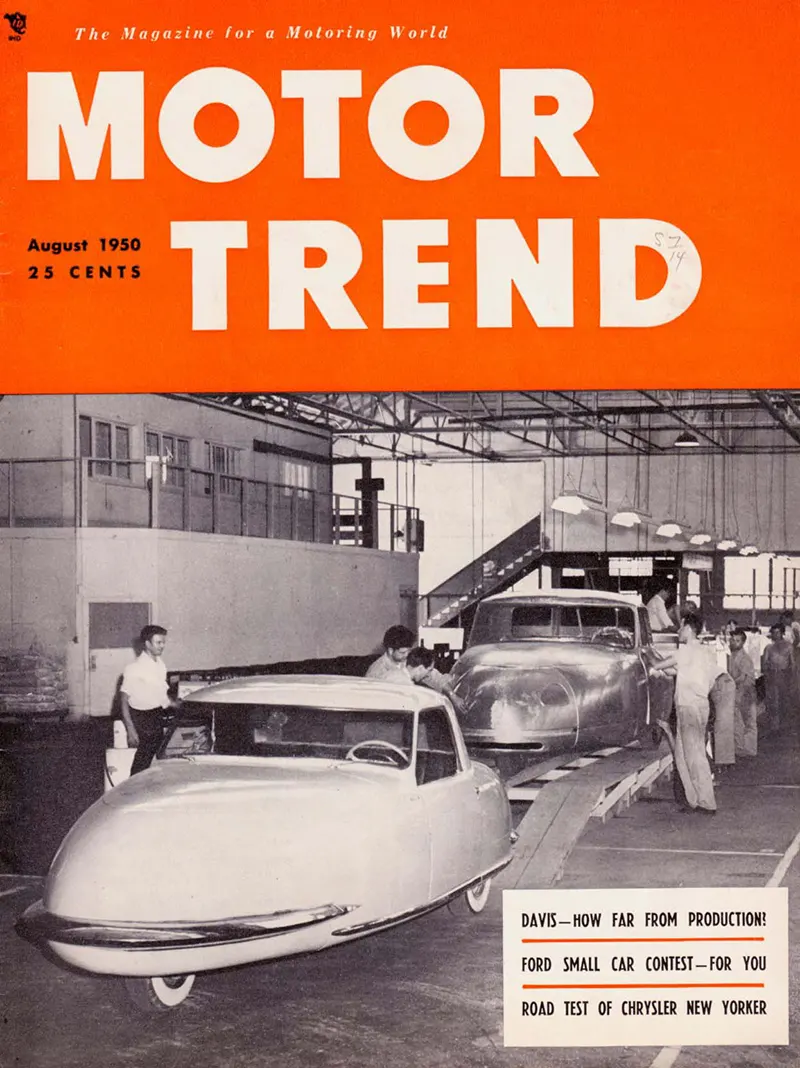In the years following World War II, the automotive industry experienced a wave of creativity and innovation. Factories were retooled, new materials were available, and the American public was eager for new vehicles. Among the many new designs that emerged during this time was the Davis Divan, a unique three-wheeled sedan that promised to change the way people thought about cars. Designed by Glen Gordon “Gary” Davis, this car was marketed as the “Ultimate Car of the Future.” Its unusual design and features captured the imagination of many.
The Inspiration Behind the Davis Divan
Before the Davis Divan came into existence, there was a vehicle known as “The Californian.” This custom three-wheeled roadster was built in 1941 by Frank Kurtis, a well-known designer in the racing world. Kurtis was inspired by the Lockheed P-38 Lightning fighter plane, which featured a single front wheel. The Californian was commissioned by Joel Thorne, a wealthy heir to the Chase bank fortune and a racing enthusiast.
In 1945, Gary Davis purchased The Californian after moving to Southern California. This vehicle served as the foundation for the Davis Divan. Davis saw potential in the unique design and wanted to create something that could appeal to the masses. He aimed to make a car that combined style, comfort, and affordability..
Read more
The Creation of the Davis Divan
Davis founded the Davis Motorcar Company and began work on his vision for a new type of vehicle. Between 1947 and 1949, the company produced a total of 16 running vehicles, including 11 pre-production Divans, two prototypes, and three military vehicles. The Davis Divan measured 183.5 inches (466 cm) in length and had a wheelbase of 109.5 inches (278 cm). This was quite long for a three-wheeled vehicle.
The Divan stood 60.0 inches (152 cm) tall and weighed in at 2,450 pounds (1,110 kg). With a width of 72.0 inches (183 cm), it could comfortably seat four passengers across its single bench seat. The name “Divan” comes from the Arabic word for a couch or daybed, reflecting its spacious interior.
Design Features of the Davis Divan
The design of the Davis Divan was distinctive. Its body was made of lightweight aluminum, which helped improve fuel efficiency. The car featured a removable fiberglass top and a steel chassis, making it both stylish and practical. The aluminum body consisted of a channel steel frame and 11 body panels made from aluminum and zinc. The prototype known as the “Baby” was built using a tube steel space frame.
Under the hood, most Divans were powered by a 2,600 cc inline-four Continental engine. This engine produced 63 horsepower, providing sufficient power for a vehicle of its size. Other prototypes, including the D-1 “Baby” and D-2 “Delta,” were equipped with 47 hp Hercules industrial engines. The claimed top speed for the Divan ranged from 100 mph (160 km/h) to 116 mph (187 km/h), which was impressive for a three-wheeled car.
Marketing the Davis Divan
Gary Davis was not just an inventor; he was also a skilled salesman. He understood the importance of marketing and public relations. To generate interest in the Davis Divan, he orchestrated extensive media coverage. His efforts paid off, as the car was featured in major magazines like Business Week, Life, and Parade. It even made appearances in a newsreel and a popular television crime drama, The Cases of Eddie Drake.
One of the most memorable promotional events involved four American Airlines stewardesses sitting side by side across the car’s bench seat. This demonstration showcased the Divan’s ability to carry four adults comfortably. Such clever marketing tactics helped attract attention to the vehicle and build excitement among potential buyers.
The Challenges Faced by the Davis Divan
Despite the initial buzz surrounding the Davis Divan, the vehicle faced several challenges. The production of the Divan was limited, with only 16 units made. This small number made it difficult for the car to gain traction in a competitive market. Additionally, the three-wheeled design raised questions about stability and safety. Many potential buyers were hesitant to invest in a vehicle that strayed so far from traditional four-wheeled cars.
The automotive market was also saturated with options. After the war, many manufacturers were eager to meet the demand for new vehicles, and customers had plenty of choices. The unique design of the Davis Divan, while innovative, had to compete against established brands with proven track records.
Furthermore, financial difficulties plagued the Davis Motorcar Company. Despite the initial excitement, the company struggled to maintain operations.























